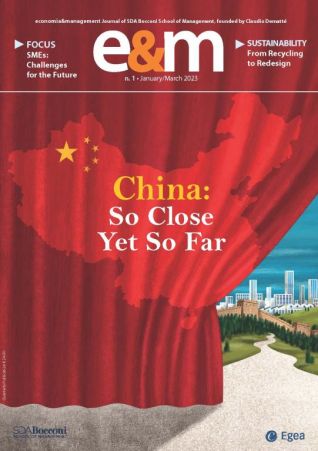E&M
2023/1
From Recycling to Redesign: The Challenge of the Circular Economy
Although the two are often confused in Italy, the circular economy does not correspond to the recycling economy. On the one hand we have a paradigm that seeks to minimize waste, trying to give new life to resources and products, and on the other a system of transformation and reutilization of waste, the however always implies a reduction of the intrinsic value of the resources and economic, environmental, and energy costs. There are essentially two paths for transforming the life cycle of products from linear to circular: with upcycling, resources already used are used again to give life to objects with a higher intrinsic value. This is what happens with truck tarpaulins that are used to produce waterproof backpacks with an attractive design, or awnings used to create a cotton-type yarn. In the redesign model, on the other hand, the products are specifically designed to have a circular life cycle: they are as modular as possible, and easy to maintain, with optimized and reworkable components. The adoption of solutions and strategies based on circularity ultimately depends on the desire of a company’s management to proceed towards a sustainable transition. This can take place only if they understand the strategic value of the circular economy, since once adopted, these solutions require rather long times in order to produce results.



